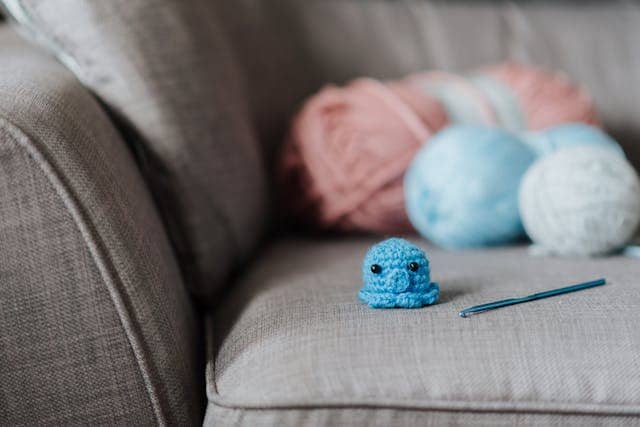All You Need to Know About Knitwear Materials
When it comes to fashion, knitwear is a versatile category that offers a wide range of materials to choose from. From jersey to cashmere to merino wool, each material has its own unique qualities and benefits. We will explore everything you need to know about knitwear materials and how to choose the right one for you.

The Basics of Knitwear: Understanding Its Appeal
Knitwear holds a cherished spot in the wardrobes of many, celebrated for its unparalleled comfort, inherent warmth, and remarkable versatility. This category of clothing is adept at meeting a diverse array of fashion needs, seamlessly transitioning from the snug embrace of a winter pullover to the sleek sophistication of a knitted dress ideal for evening wear. One of knitwear’s most lauded attributes is its ability to adapt and mould to various body shapes, ensuring a flattering silhouette that caters to an inclusive range of body types. This adaptability stems from the knit fabric’s unique construction, which allows for a generous stretch, accommodating movement while maintaining form. Beyond its aesthetic and functional versatility, knitwear offers a tactile pleasure, with textures ranging from the smooth, comforting feel of jersey to the sumptuous luxury of cashmere, each bringing its own distinct sensation and warmth. It’s this rich tapestry of qualities that underpins the enduring appeal of knitwear, making it a staple in fashion that transcends seasonal trends. Whether drawn to its comfort, warmth, or the sophisticated ease it brings to styling, there’s no denying the integral role knitwear plays in enriching our sartorial choices.
Jersey Fabric – The Everyday Wonder
Jersey fabric stands as a cornerstone in the realm of knitwear, boasting attributes that make it an indispensable option for daily wear. Characterised by its softness and impressive elasticity, this fabric amalgamates cotton, polyester, and occasionally spandex to produce garments that offer both comfort and breathability. Its light weight makes it an all-season favourite, capable of delivering ease without compromising on style.
Jersey’s versatility is its hallmark, with applications ranging from the laid-back allure of a casual tee to the understated elegance of a snug dress. Its adaptability is further accentuated by its ability to be fashioned into both fitted and loose garments, catering to a broad spectrum of style preferences and occasions. The fabric’s inherent stretch not only ensures a comfortable fit but also contributes to its longevity, resisting wear and maintaining shape over time.
As an everyday fabric, jersey presents an economical choice that does not shy away from delivering luxury in terms of texture and wearability. Its carefree maintenance and durable nature make it a go-to option for a wardrobe that champions both practicality and fashion-forward thinking. Opting for jersey knitwear is a testament to the wearer’s appreciation for materials that blend everyday functionality with effortless style, embodying the essence of contemporary knitwear with unparalleled ease.

Cashmere – The Luxurious Choice
Cashmere reigns supreme in the pantheon of knitwear and luxery knitted fabrics, distinguished by its unparalleled softness and insulating properties. This exquisite material, derived from the undercoat of cashmere goats, is celebrated not just for its opulent texture but also for its exceptional warmth-to-weight ratio, making it an ideal choice for refined yet cosy attire. The process of obtaining cashmere is meticulous, requiring the careful collection and separation of fine undercoat fibres from the coarser guard hairs, a factor that contributes to its premium positioning in the market.
Opting for a cashmere piece is a declaration of one’s esteem for timeless elegance and quality. The fibre’s delicate feel against the skin and its subtle lustre lends an air of sophistication to any ensemble, effortlessly elevating both casual and formal looks. Moreover, cashmere’s natural breathability and moisture-wicking capabilities ensure comfort across a variety of climates, enhancing its allure as a year-round fabric.
While the initial investment in a cashmere garment may be significant, the material’s enduring appeal and resilience justify the expense. With proper care, cashmere pieces retain their shape and softness over time, becoming cherished staples in one’s wardrobe. The choice of cashmere speaks to a discerning appreciation for luxury that does not compromise on functionality, embodying a harmonious blend of finesse and practicality that is rare in the realm of textiles.
Merino Wool – Durable and Comfortable
Merino wool sets itself apart in the world of knitwear and knitted fabrics with its exceptional softness and its remarkable ability to regulate temperature, making it a favoured material across seasons. This natural fibre, harvested from Merino sheep, boasts a fine texture that is gentle on the skin, avoiding the itchiness sometimes associated with coarser wools. Its breathability is a key feature, allowing air to circulate freely and moisture to evaporate, thus keeping the wearer comfortable in both warm and cool climates.

What sets merino wool apart further is its natural resilience and elasticity, which contribute to garments that not only fit well but also resist wrinkling and maintain their shape over time. This durability ensures that merino wool items are not only practical for everyday wear but also represent a sound investment in long-lasting fashion. Its inherent odour-resistant properties make it an ideal choice for those with an active lifestyle, reducing the need for frequent washing and thus contributing to the material’s longevity.
Merino wool’s versatility extends beyond jumpers and cardigans to include a broad range of attire, from lightweight tops suitable for layering to robust outer garments designed for the chillier months. Its natural qualities, coupled with its environmental credentials as a renewable resource, underscore merino wool’s status as a superior choice within the knitwear domain.
The Environmental Impact of Knitear Materials
The sustainability of knitwear materials is a crucial aspect that demands attention, particularly in the current climate where environmental considerations are paramount. Natural fibres like cashmere and merino wool, whilst renewable and biodegradable, necessitate responsible sourcing and animal welfare considerations to mitigate their environmental footprint. The cultivation of these materials requires significant resources, including water and land, and as such, their environmental impact can vary greatly depending on the practices employed during production. On the other hand, synthetic fibres such as polyester, often used in jersey fabric, pose a different set of environmental challenges. These materials are derived from fossil fuels, contributing to the depletion of non-renewable resources and releasing harmful emissions during their production process. Furthermore, their non-biodegradable nature results in long-term pollution, particularly in oceans where microfibres shed from synthetic garments exacerbate the problem of plastic pollution. Conscious choices towards sustainable and ethically produced knitwear can significantly reduce these impacts, encouraging a shift towards more eco-friendly alternatives and production methods that prioritise the planet’s health. As consumers become more informed, the demand for transparency and sustainability in the knitwear industry is likely to influence future trends and practices.
How to Choose the Right Knitwear Material for You
Selecting the ideal knitwear material involves weighing your lifestyle, personal taste, and the demands of your environment. For those seeking warmth without weight, cashmere offers unparalleled softness and insulation, perfect for layering during colder months. Meanwhile, jersey fabric shines in day-to-day wearability, blending ease with a flair that transitions smoothly from casual to smart settings. Merino wool, with its temperature-regulating features, suits an active life where comfort and odour resistance are prized. Assess your wardrobe’s needs—whether it’s for office attire that breathes and moves with you, or cosy weekend wear that stands the test of time. Equally, reflect on the care and longevity of different materials; while some may require more attentive maintenance, their durability and timeless appeal could offer greater value in the long run. In making your choice, also be mindful of ethical considerations and the environmental impact of production processes. A material’s origin, the conditions under which it was produced, and its sustainability credentials can deeply influence a conscientious decision. By prioritising these factors, you can curate a selection of knitwear that not only complements your personal style but also aligns with your values and the practicalities of your daily life

The Future of Knitwear: Innovations and Trends
The landscape of knitwear is set for a transformative shift, propelled by a surge in technological advancements and a growing consciousness around sustainable practices. Innovations in fibre technology are paving the way for knitwear that not only exceeds in comfort and durability but also in environmental stewardship. We are witnessing the emergence of eco-friendly materials that mimic the luxurious feel of cashmere and the resilience of merino wool, without the associated ecological footprint. Moreover, advancements in knitting techniques are enabling designers to produce less waste during garment production, championing a more sustainable fashion future.
The trend towards smart knitwear is another exciting development, with fabrics being engineered to offer temperature regulation, moisture-wicking, and even anti-microbial properties, tailored to support an active and health-conscious lifestyle. These innovations are not just enhancing the functionality of knitwear but are also opening new avenues for fashion-forward design, blending aesthetics with performance.
As we look ahead, the integration of technology and a steadfast commitment to sustainability are set to redefine knitwear, making it not only more adaptable to our needs but also kinder to our planet. The future of knitwear promises a wardrobe that marries innovation with tradition, and style with conscience, heralding a new era for fashion enthusiasts and the environment alike.